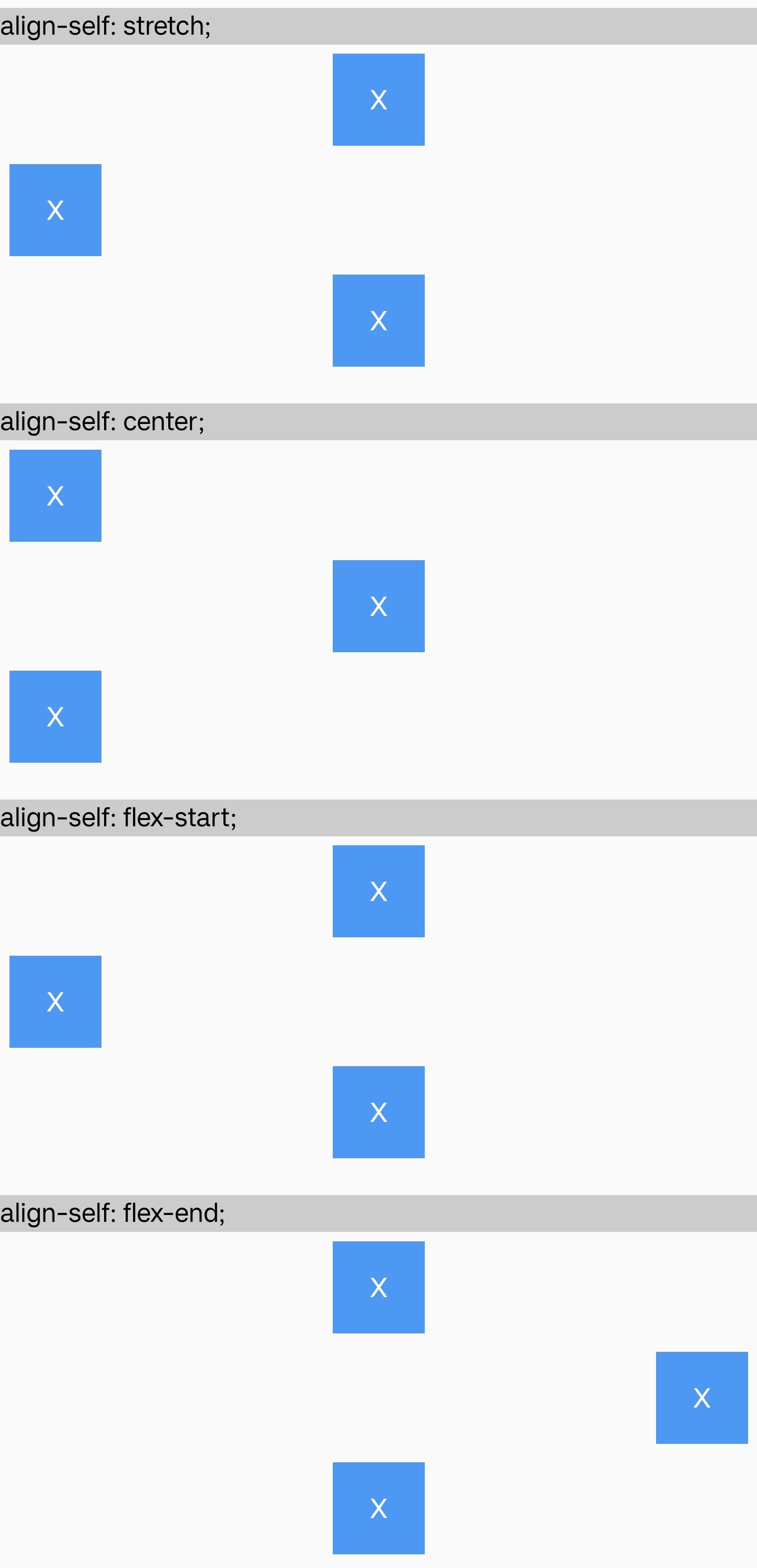align-self
Introduction
In flex and linear layout, align-self will align the elements in the current container on the cross axis. In grid layout, align-self controls the alignment of child elements along the block axis within their grid area, and align-self overrides the existing value of align-items.
For flexible box layout, if any child element's cross-axis margin is set to auto, align-self will be ignored.
For grid layout, Lynx doesn't support writing-mode, so the block axis is the vertical axis.
Examples

Syntax
Values
auto
Default value. Aligns according to the parent's align-items value.
stretch
If items are smaller than the container in the cross-axis direction (block axis in grid layout), items with unspecified dimensions (height/width) or set to auto will be stretched to match the height of the row or width of the column. These items still maintain their aspect ratio constraints.
center
In flex and linear layouts, the item is centered along the cross axis.
In grid layout, the item is centered along the block axis within its grid area.
start
In flex and linear layouts, the item is aligned at the start of the cross axis.
In grid layout, the item is aligned with the start edge of its grid area along the block axis.
end
In flex and linear layouts, the item is aligned at the end of the cross axis.
In grid layout, the item is aligned with the end edge of its grid area along the block axis.
flex-start
Behaves the same as start.
flex-end
Behaves the same as end.
baseline
The item participates in baseline alignment. Currently only supported in flexible box layout.
Formal definition
| Initial value | auto |
| Applies to | flex/grid/linear items |
| Inherited | no |
| Animatable |
Formal syntax
Differences from web
normal,self-startandself-endare not supported.
Compatibility
LCD tables only load in the browser